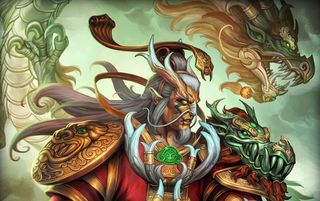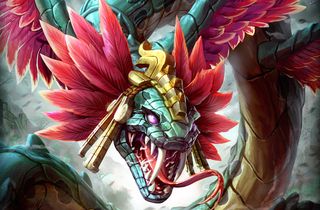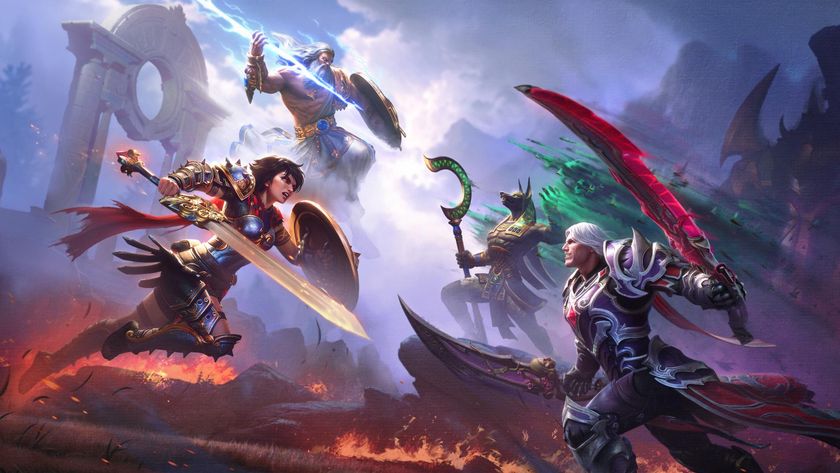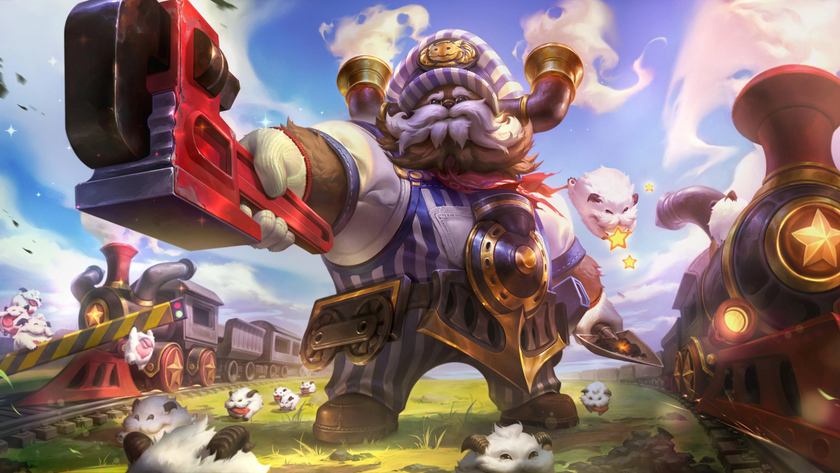Redesigning Smite gods and the $1.3 million World Championship

On November 15, god-on-god MOBA brawler Smite starts barreling towards the end of its first year of competitive play. Back in March, I watched Smite’s best European and American teams compete in the game’s big coming-out-of-beta launch tournament. Since then, Hi-Rez Studios has implemented a competitive “season” with miniature weekend tournaments pitting pro teams against one another, culminating in two big tournaments this month: the European and American regional finals, held over the next two weekends. In January, those finalists will go up against teams from Asia and South America for Smite’s first world championship, with over $1.3 million on the line.
To dig into the significant changes to Smite since launch, and find out more about the regional championships, I talked to Hi-Rez COO Todd Harris. I came away impressed with the way Hi-Rez has set up its competitive league, and how that feeds into the tournaments taking place this November.
In most competitive games, be they shooters or lane-pushers, there’s a clear divide between pro teams and everyday players. Pro teams are sponsored organizations like Cognitive Gaming and Team Solo Mid. Everyone else is, well, everyone else. Recently, that’s started to change. League of Legends’ Challenger Series pits the best amateur teams against one another, with a shot at making it to the pro-level LCS, the League of Legends Championship Series. On a smaller scale, Hi-Rez is doing the same thing.

In late summer, Hi-Rez introduced the Smite Pro League and the Challenger Cup, which last seven weeks. The challenger cup is open to anyone, and feeds into a wildcard tournament, which gives amateur teams the chance to make it to the regional finals. So far, two teams have. They’re longshots, but it’s possible one or both will make it to the world championship in January and walk away with a big chunk of the million-plus dollar prize pool.
Harris told me that Hi-Rez put $600,000 into the world championship prize pool to start, and the rest—it’s at $1,353,293 as of this writing—has come from the community, buying special in-game items that go towards the pool.
“We’re super pleased with that: we’re fans of having an element of crowd-supported prize pools,” Harris said. “And I think with this, Smite will be the fastest new game franchise to exceed the one million dollar mark for an e-sports event. The fact we’ve been able to do that in the first year since launch is cool, and humbling.”
Smite’s $1.3 million pool, which still has time to grow before the January tournament, isn’t exactly the $10 million Dota 2 raised earlier this year. But Smite is still growing fast, and it wasn’t so long ago that the very first gaming tournament passed $1 million in prize money. The game has more than five million registered players, and according to Harris, their daily player count would earn them a regular spot in Steam’s top ten most played games list. (Of course, that number could be anywhere between 10,000 and a million).
The biggest gaming news, reviews and hardware deals
Keep up to date with the most important stories and the best deals, as picked by the PC Gamer team.
The game itself continues to grow, too. Hi-Rez has consistently added a new god to Smite every two weeks, filling out the existing pantheons and raising the current god count to 59. Harris said that would continue into the first few months of 2015, and sometime next year Hi-Rez will introduce a new pantheon to the mix. Next year will also see an update to Smite’s Conquest map, the standard 5v5 battlefield that can trace its lineage back to the original Dota. The specific changes are still under wraps, but Harris did mention that Hi-Rez will be making some adjustments to the map design or layout in addition to aesthetic tweaks.
Popular gods have gotten their own visual changes, as well. I asked Harris why Ao Kuang, the Chinese dragon god, had his kit and character model reworked to become the Mayan god Kukulkan, while Smite’s next god release will be a new humanoid Ao Kuang with a new ability kit. Hi-Rez did the same thing with Sun Wukong and Hun Batz earlier this year.

“We take feedback from the community, and don’t listen to all of it but try to pay attention when it seems relevant,” Harris said. “Particularly after being in beta in the Chinese market, we have a better understanding of how Chinese gamers perceive the visual representation of these characters. In the case of Sun Wukong, we were pretty transparent saying we didn’t do a good job nailing the visual design of Sun Wukong that matched player expectations and similarly with Ao Kuang. In both cases it’s to try to have a visual depiction that will resonate with today’s gamers.”
I asked Harris if Hi-Rez is moving towards more humanoid depictions of gods in general, but he said these were specific cases. Modern depictions of Sun Wukong and Ao Kuang typically show them anthropomorphized and walking upright, said Harris.
At the beginning of 2014, Smite was the third-biggest lane-pusher on the PC behind League of Legends and Dota. As 2014 comes to a close, it’s still the third-biggest, but the competitive scene is clearly swelling. The launch tournament prize pool was a total of $200,365, with $100,000 put in by Hi-Rez. The community has already raised triple that amount for the world championship. 2015 may be a very big year for Smite, because the game will launch out of beta in China, where it could easily pick up a million new players.
We’ll be following along with the regional finals and the world championship in the next two months—and rooting for at least one of the underdog Challenger Cup teams to make it to the championship.

Wes has been covering games and hardware for more than 10 years, first at tech sites like The Wirecutter and Tested before joining the PC Gamer team in 2014. Wes plays a little bit of everything, but he'll always jump at the chance to cover emulation and Japanese games.
When he's not obsessively optimizing and re-optimizing a tangle of conveyor belts in Satisfactory (it's really becoming a problem), he's probably playing a 20-year-old Final Fantasy or some opaque ASCII roguelike. With a focus on writing and editing features, he seeks out personal stories and in-depth histories from the corners of PC gaming and its niche communities. 50% pizza by volume (deep dish, to be specific).
Most Popular









